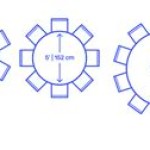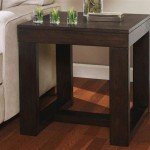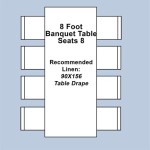Play Table and Chairs: A Foundation for Learning and Play
Play tables and chairs constitute a critical element in creating stimulating and engaging environments for children. These seemingly simple pieces of furniture transcend mere functionality, serving as central hubs for various developmental activities. Their strategic placement in playrooms, classrooms, and even homes can significantly impact a child's cognitive, social, and physical growth. The purpose of this article is to explore the numerous benefits, diverse types, and practical considerations involved in selecting and utilizing play tables and chairs effectively.
The significance of dedicated play spaces for children cannot be overstated. Providing a clearly defined area encourages focused engagement and reduces distractions. A play table and chair set, specifically designed for children, offers a size-appropriate surface and seating that promotes good posture and comfortable interaction. This differs significantly from expecting children to use adult-sized furniture, which can lead to discomfort and potentially hinder their ability to concentrate on the task at hand.
Furthermore, play tables and chairs facilitate organization. They provide a designated storage area for toys, art supplies, and other play materials. This organization helps children develop practical life skills, such as tidying up and taking responsibility for their belongings. Consistent use of a play table also aids in establishing routines, making it easier for children to transition between play and other activities like mealtime or study.
Fostering Development Through Play
One of the primary benefits of play tables and chairs lies in their ability to foster holistic development. They provide a platform for activities that stimulate cognitive skills, encourage social interaction, and enhance fine motor abilities. Activities such as puzzles, building blocks, drawing, and painting are all effectively facilitated by this type of furniture.
Cognitively, play tables encourage problem-solving, critical thinking, and spatial reasoning. Puzzles require children to analyze shapes and patterns, while building blocks allow them to experiment with construction and design. As they engage in these activities, they develop their problem-solving skills and learn to think critically about the challenges they encounter.
Socially, play tables are ideal for collaborative activities. Children can gather around the table to play games, build structures together, or engage in imaginative role-playing. These interactions encourage communication, cooperation, and conflict resolution. Learning to share, take turns, and work as a team are crucial social skills that are effectively developed through collaborative play at a table.
From a physical perspective, play tables and chairs can enhance a child's fine motor skills. Activities such as drawing, painting, and working with small manipulatives require precise hand-eye coordination and finger dexterity. These fine motor skills are essential for tasks such as writing, buttoning clothes, and using utensils. A well-designed play table provides a stable and supportive surface that allows children to comfortably practice and refine these skills.
Exploring Different Types of Play Tables and Chairs
The market offers a wide array of play tables and chairs, each designed to meet specific needs and preferences. These variations can be categorized based on materials, size, shape, and features. Understanding the different types available is essential for making an informed decision.
Material choices significantly impact the durability, aesthetic appeal, and safety of play tables and chairs. Common materials include wood, plastic, and metal. Wooden play tables are generally considered more durable and aesthetically pleasing, offering a classic and timeless look. High-quality wood products are also less likely to contain harmful chemicals. Plastic play tables are often lighter and easier to clean, making them a convenient option for younger children. Metal play tables offer a modern aesthetic and can be very durable, but ensuring that edges are smooth and rounded is important for safety.
Size and shape are crucial considerations, especially when considering the age and number of children who will be using the furniture. Play tables come in various shapes, including square, rectangular, round, and oval. The ideal shape depends on the available space and the intended use. Round tables are often preferred for social activities, as they encourage equal participation and interaction. Rectangular tables are suitable for activities such as drawing and building, while square tables offer a versatile option that can be easily arranged in different configurations.
Features can enhance the functionality and appeal of play tables and chairs. Some play tables come with built-in storage compartments, which provide a convenient way to store toys and art supplies. Others have reversible tabletops, offering different surfaces for various activities, such as a smooth surface for drawing and a textured surface for building blocks. Adjustable-height chairs are particularly useful, as they can accommodate children of different ages and sizes.
Specialized play tables are also available, catering to specific interests and activities. These include train tables, art tables, and water tables. Train tables provide a dedicated surface for building and playing with model trains, while art tables feature built-in paper rolls and storage for art supplies. Water tables offer a safe and contained environment for water play, allowing children to explore concepts such as buoyancy and volume.
Key Considerations When Selecting Play Tables and Chairs
Choosing the right play table and chairs involves careful consideration of several factors, including safety, durability, size, and functionality. Prioritizing these aspects ensures that the furniture meets the child's needs and provides a safe and enjoyable play experience.
Safety should always be the top priority when selecting any children's furniture. This includes ensuring that the materials used are non-toxic and free from harmful chemicals. Look for play tables and chairs that comply with relevant safety standards, such as those set by the American Society for Testing and Materials (ASTM). Check for sharp edges, loose parts, and other potential hazards. Stability is also crucial. The play table and chairs should be sturdy and resistant to tipping, especially when children are leaning on them or climbing on them.
Durability is another important consideration, especially if the play table and chairs will be used frequently. Choose materials that can withstand the wear and tear of daily use. Wooden play tables are generally more durable than plastic ones, but high-quality plastic play tables can also be a good option. Look for furniture with sturdy construction and reinforced joints. A durable play table and chair set will last for years, providing a valuable investment in the child's development.
Size is essential for ensuring comfort and proper posture. The height of the play table and chairs should be appropriate for the child's age and size. A table that is too high or too low can lead to discomfort and back pain. As a general guideline, the child's feet should rest flat on the floor when sitting on the chair, and the table should be at a height that allows them to comfortably reach their materials. Adjustable-height chairs are a good option for children of different ages or for those who are growing quickly.
Functionality should also be considered. Think about the types of activities the child will be engaging in at the play table and choose furniture that is appropriate for those activities. If the child enjoys drawing and painting, an art table with built-in storage for art supplies may be a good choice. If the child enjoys building with blocks, a play table with a smooth, flat surface is ideal. Consider whether the play table needs to be portable or easy to store. Folding play tables are a convenient option for families with limited space.
Beyond these core considerations, aesthetic appeal also plays a role. Choose play tables and chairs that complement the decor of the room and that are visually appealing to the child. Bright colors and fun designs can make the play area more inviting and engaging. Ultimately, the goal is to create a space that encourages creativity, exploration, and learning.
Finally, consider the long-term value of the play table and chairs. Investing in high-quality furniture that can be used for multiple years or even passed down to younger siblings is a wise decision. A well-chosen play table and chair set can provide years of enjoyment and contribute significantly to a child's development.

Fijn Clouds Play Table Matching Chairs Optional Kids Haven

Kids Table And Chairs Haven

Kids Multi Activity Play Table And Chair Babies Baby Nursery Furniture Tables Chairs On Carou

Fijn Clouds Play Table Matching Chairs Optional Kids Haven

Children Kids Study Play Table Chair Furniture Home Living Tables Sets On Carou

Costway 5pcs Kids Table Chairs Set Children Activity Desk 4 Stackable Diy At B Q

Milliard Kids Activity Play Table Chair Set For Toddlers Round With 4 Storage Stools White Gray Com

Children Kids Activity Table Chair Set Play Furniture W Storage 1 Unit Fry S Food
Children Kids Play Table Chair Ee Singapore

Nestor Play Table Chair Set West Elm








